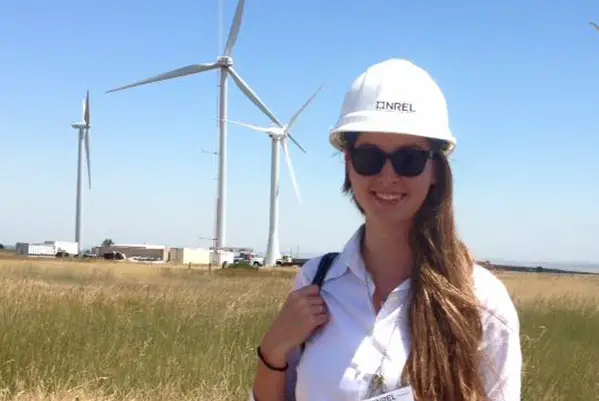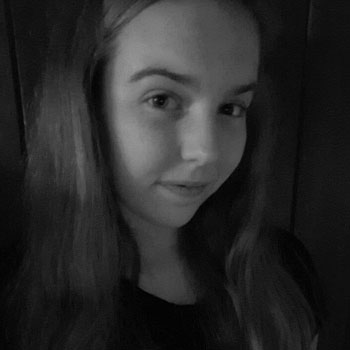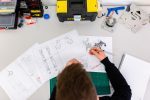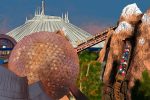Students often begin college as ambitious freshmen who are ready to take on the world and anything it may throw at them. However, it’s not uncommon for this ambition to be lost following one’s first unsatisfactory grade.
Despite the roadblocks that tend to dishearten many college students nowadays, there are some who conquer such dilemmas in order to go above and beyond, as they use these roadblocks to strengthen their drive and determination.
One such student is Alyssa Norris, a successful senior who someday hopes to work at an establishment focused on energy policy. So far, her own energy has made a significant impact on our world already.
Haileigh Galloway: You’re pursuing a degree in engineering. What encouraged you to do so?
Alyssa Norris: I have always been interested in math and science, but I like applying them to real-life situations and using them to solve real-world challenges, so as I got older and learned more about engineering, it seemed like a great fit. I also like how much you can do with an engineering degree. There are many CEOs who have an engineering background, as well as lawyers, and even some policymakers. The flexibility of an engineering degree appealed to me, as well as the problem-solving requirements of the degree.
HG: What do you plan to do with your degree?
AN: I plan on using my degree to help me both professionally and personally. I enjoy engineering, but I hope to utilize the technical skills I learned from my degree and apply them to business and policy challenges. Ideally, I hope to be a liaison between engineers, businesses and policymakers.
HG: It seems that you have made a lot of significant achievements so far. Which would you say have been the most influential?
AN: After my freshman year of college, I had the opportunity to study abroad in the UK on an Undergraduate Fulbright exchange. That was an incredible life-changing experience where I had the opportunity to work with students from across the nation and learn in a different country. The friendships I made through the program and being selected for a nationally competitive program helped me immensely.
I also had the opportunity to spend a summer in Washington, D.C. after being selected as a Mount Vernon Leadership Fellow. That experience was rewarding because I worked on energy issues that I was passionate about, and I had the opportunity to learn more about the policies and complexities behind energy production and distribution in the United States. These two opportunities opened doors that I never imagined and have guided my life on a different trajectory.
HG: I’ve heard that you interned with the US Department of Energy. What made you apply for this internship? What did you end up completing during it?
AN: I was selected as a Minority Educational Institution Student Partnership Program (MEISPP) awardee at the Department of Energy, which gave me the opportunity to intern at the DOE headquarters in Washington, D.C. I have always been interested in energy production and distribution, as well as how to make energy more affordable, reliable and environmentally clean. Interior Alaska has some of the worst air quality in the country.
When I was a sophomore in high school, I became curious as to why that was and learned that it is largely due to air pollution caused by energy sources that are used to heat people’s homes. Since that time, I have become increasingly interested in energy solutions. I wanted to work at the Department of Energy because they oversee so many energy projects across the nation, and I thought it would be a great experience to work at the headquarters and see the relationship between policy and energy projects.
As part of my internship, I worked with the Energy Jobs Strategy Council. The projects that I worked on included helping create and put on a “STEM-E” program (science, technology, engineering, math-enrichment) which was a full-day program, once a week that we developed for underprivileged youth in the metropolitan Washington, D.C. area and in Baltimore, Maryland. The program aimed to introduce youth ages from fourteen to twenty-two to STEM opportunities and jobs, many of which were related to energy careers.
We brought in speakers from different national departments, including the Department of Justice and the Department of Agriculture to talk to students about how they use STEM in their careers. We also brought in successful community members to teach professional development skills such as résumé workshops and public speaking seminars.
Because of the program, I had the opportunity to present at the White House and share updates about the program. I also worked on energy infrastructure research reports and white papers focusing on job creation and economic impact in areas around energy infrastructure projects.
HG: As you’re the chapter president of the Society of Women Engineers, tell me about what your position entails and what this society has completed. What other societies or institutes are you a member of?
AN: I served as [the president for] the Society of Women Engineers (SWE) for the 2016-2017 school year, so I am not currently the president, but I am still highly involved with the organization. As president, I organize bi-weekly events for our collegiate members, host an “Evening with Industry” event (where companies come to meet students over a meal and networking hour), organize a “Kids Science and Engineering Day” (where elementary age youth in the surrounding area come to learn about science and engineering and participate in hands-on experiments and activities), organize guest speakers and oversee mentorship programs for women in engineering.
Beyond that, my job is really to encourage women to pursue an engineering degree and provide support and resources for them. Last year I created the “Little SWEster” program to help retain freshmen engineering students. This program pairs female freshmen with female upperclassmen, providing them with a support network and a role model. Having someone to go to and ask questions and who can help when classes or life is challenging helps retain students and gives them the support and guidance they need.
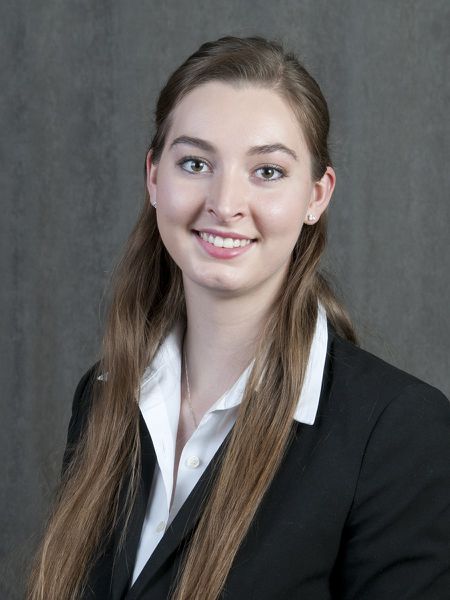
Beyond SWE, I am a member of the American Society of Civil Engineers (ASCE) and was a concrete canoe designer and race member (you design and make a canoe out of concrete and race it in the spring at the regional ASCE conferences).
I have also been involved with ASWSU (Associated Students of Washington State University, student government), University Innovation Fellows (a nation-wide entrepreneurship group that originated out of Stanford’s Design School), Harold Frank Engineering Entrepreneurship Institute, the WSU Ethics Bowl Team (similar to debate team) and intramural sports. Beyond that, I volunteer with the Palouse Discovery Science Center and Alternatives to Violence of the Palouse.
HG: How did you come to be placed on the Board of Regents for the state of Washington?
AN: Washington State University is unique in the fact that they have a voting student member on the board. The process of being selected as the student regent is quite intensive. The first step was to complete a paper application, then the top ten candidates are interviewed by a committee, composed of student leaders and representatives from across the university’s different campuses.
The top three candidates are forwarded to the governor’s office where there is another application and interview process. Finally, the governor selects a student, and that individual is appointed to the Board of Regents. As the student regent, I represent over 30,000 students across the state and have voting rights on the board.
I first heard about the position two years ago when the former student regent was discussing the position and what it entailed with one of my friends. I did not realize that there was even a Board of Regents that governed the university at that time.
I served on student government two years prior to being appointed to this position, so I had experience representing students, writing legislation, and serving on committees. I loved my time there and I wanted to continue by serving as student regent.
HG: Tell me a little bit about what scholarships and awards you have earned so far.
AN: In addition to the Undergraduate Fulbright Award and being selected as a Mount Vernon Leadership Fellow, I have received the Washington State University President’s Leadership and Engagement Award of Distinction, Outstanding Junior Award for the Washington State University Voiland College of Engineering and Architecture, Washington State University Out-of-State Leadership Scholarship, Boeing e-Connection Scholarship, and the Rotary Youth Leadership Award.
Most of the awards revolve around leadership and engagement. I was also named as an honorable mention for the Udall Environmental Scholarship, which is a competitive national scholarship given to students who are interested in protecting the environment.
HG: What and who inspired you to work so hard and achieve so much?
AN: There have been countless people in my life who have helped me and have inspired me to work hard and succeed. The person who encouraged me the most and who keeps me striving to be the best I can be is my best friend, Sabrina. She was the kind of person who kept pushing you and who wanted you to be the best version of yourself.
When we were 15, we got matching lockets, and when we were 16, she was diagnosed with cancer. She was a fighter and she never gave up. Not only that, but she didn’t let the cancer slow her down. She lived every day to its fullest, and she made everyone’s days a little brighter and more worthwhile.
She passed away my first week of college, which was the most difficult week of my life. Being the best I can be and serving others honors her memory, and it keeps me working hard. I still wear my matching locket every day and it is a constant reminder to live each day to the fullest.


